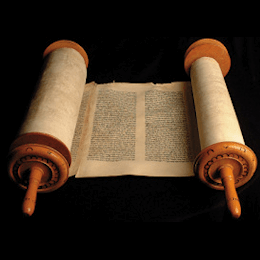Textus Receptus Bibles
Masoretic Text 1524
Old Testament
| 2:1 | בני אם תקח אמרי ומצותי תצפן אתך׃ |
| 2:2 | להקשׁיב לחכמה אזנך תטה לבך לתבונה׃ |
| 2:3 | כי אם לבינה תקרא לתבונה תתן קולך׃ |
| 2:4 | אם תבקשׁנה ככסף וכמטמונים תחפשׂנה׃ |
| 2:5 | אז תבין יראת יהוה ודעת אלהים תמצא׃ |
| 2:6 | כי יהוה יתן חכמה מפיו דעת ותבונה׃ |
| 2:7 | וצפן לישׁרים תושׁיה מגן להלכי תם׃ |
| 2:8 | לנצר ארחות משׁפט ודרך חסידו ישׁמר׃ |
| 2:9 | אז תבין צדק ומשׁפט ומישׁרים כל מעגל טוב׃ |
| 2:10 | כי תבוא חכמה בלבך ודעת לנפשׁך ינעם׃ |
| 2:11 | מזמה תשׁמר עליך תבונה תנצרכה׃ |
| 2:12 | להצילך מדרך רע מאישׁ מדבר תהפכות׃ |
| 2:13 | העזבים ארחות ישׁר ללכת בדרכי חשׁך׃ |
| 2:14 | השׂמחים לעשׂות רע יגילו בתהפכות רע׃ |
| 2:15 | אשׁר ארחתיהם עקשׁים ונלוזים במעגלותם׃ |
| 2:16 | להצילך מאשׁה זרה מנכריה אמריה החליקה׃ |
| 2:17 | העזבת אלוף נעוריה ואת ברית אלהיה שׁכחה׃ |
| 2:18 | כי שׁחה אל מות ביתה ואל רפאים מעגלתיה׃ |
| 2:19 | כל באיה לא ישׁובון ולא ישׂיגו ארחות חיים׃ |
| 2:20 | למען תלך בדרך טובים וארחות צדיקים תשׁמר׃ |
| 2:21 | כי ישׁרים ישׁכנו ארץ ותמימים יותרו׃ |
| 2:22 | ורשׁעים מארץ יכרתו ובוגדים יסחו ממנה׃ |

Masoretic Text 1524
The Hebrew text of the Old Testament is called the Masoretic Text because in its present form it is based upon the Masora—the Hebrew, textual tradition of the Jewish scholars known as the Masoretes (or Masorites). The Masoretes were rabbis who made it their special work to correct the faults that had crept into the text of the Old Testament during the Babylonian captivity, and to prevent, for the future, its being corrupted by any alteration. They first separated the apocryphal from the canonical books, and divided the latter into twenty-two books, being the number of letters in the Hebrew alphabet. Then they divided each book into sections and verses.
There is a great difference of opinion as to when the Masoretic Text was written, but it was probably accomplished in the 10th -11th century. Several editions existed, varying considerably, but the received and authoritative text is that of Jacob ben-chayim ibn Adonijah, who carefully sifted and arranged the previous works on the subject. It was published in 1524.